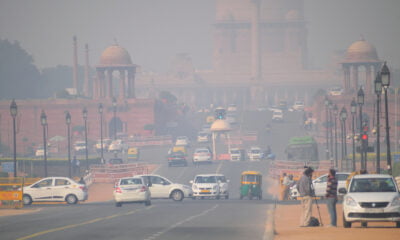

Environment
How the aviation industry are reducing their pollution
Poor air quality is known to have a damaging effect on the health and well-being of both humans and animals alike. The effect can range from irritation to more severe symptoms, and the aviation industry is a large contributor to being the source of air pollutants that affect air quality. Nitrogen dioxide, nitric oxides and particulate matter are all forms of pollutants that are measured and with a focus on energy efficient transport, the aviation are under the spotlight with how they are reducing their pollution levels. If you’re travelling to Europe, you should make sure that you guarantee your EHIC Renewal, and if you are planning on doing short trips around different countries in Europe, you should look at other options aside from airplane flights for those internal journeys, in order to help reduce emissions.
Legislation
Various European legislation has targeted the aviation industry, with local authorities being required to assess air quality in order to meet certain targets. Although there are no specific targets for the air quality in the UK, all airports are tasked with measuring the air quality around the airport, in order to get a good idea of the effects that the aviation industry are having on the environment. Since the start of 2012, emissions from all flights from, to and within the European Economic Area are included in the EU emissions trading system. The International Civil Aviation Organization agreed in 2013 to develop a global market-based mechanism to address international aviation emissions in order to help the industry to reducing their pollution. These market-based measures are deemed to be the most cost-efficient and environmentally effective option for controlling emissions, compared with alternatives such as fuel tax.
Airline Changes
There are a number of different changes that airlines have made to their operations in order to reduce the amount of emissions and improve air quality around airports. For example, aircrafts are now required to switch of their main engines on arrival and, where possible, limiting the use of aircraft auxiliary power units by using fixed, electrical ground power (units) and pre-conditioned air instead. On departure, aircrafts should delay switching on main engines until absolutely necessary. Other requirements include operating aircraft on the lowest possible energy draw whilst parked, reducing the number of engines when taxing and applying reduce thrust take off. All of these changes are helping to reduce air pollution.
Improve Equipment
In general, the aviation industry is working to reduce the level of pollutants that the aircrafts emit into the atmosphere. Through improved advancements to aircraft and engine design, operational procedures and fuels, the task of reducing air pollution is beginning to be taken into control. Improving equipment and processes will help airlines to produce less emissions, while still being able to run just as efficiently as a regular aircraft – if not better. Improving equipment can help to reduce emissions, improve efficiency and may even eventually help to reduce costs of flights in the near future, if they are using more environmentally friendly procedures.


 Environment10 months ago
Environment10 months agoAre Polymer Banknotes: an Eco-Friendly Trend or a Groundswell?

 Environment11 months ago
Environment11 months agoEco-Friendly Home Improvements: Top 7 Upgrades for 2025

 Features9 months ago
Features9 months agoEco-Friendly Cryptocurrencies: Sustainable Investment Choices

 Features10 months ago
Features10 months agoEco-Friendly Crypto Traders Must Find the Right Exchange





























